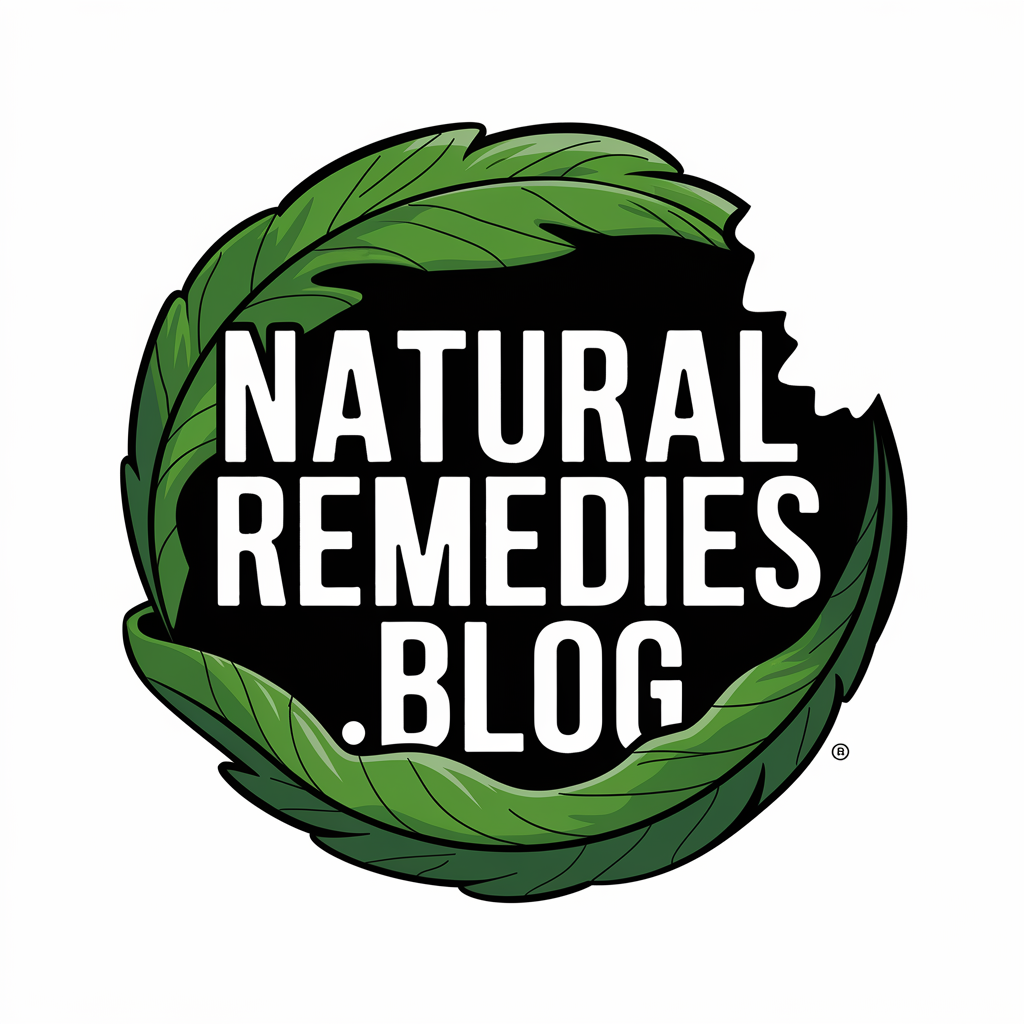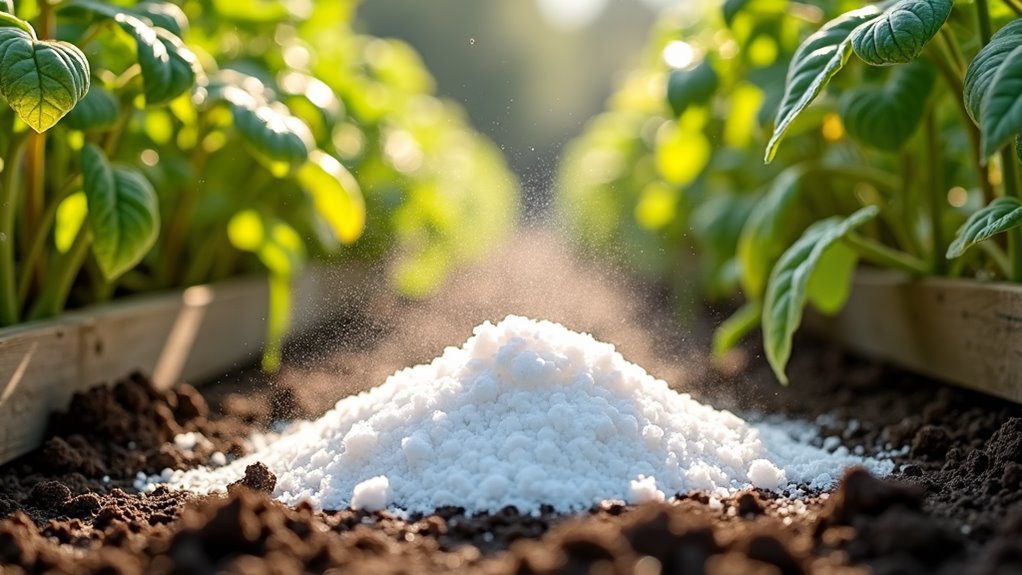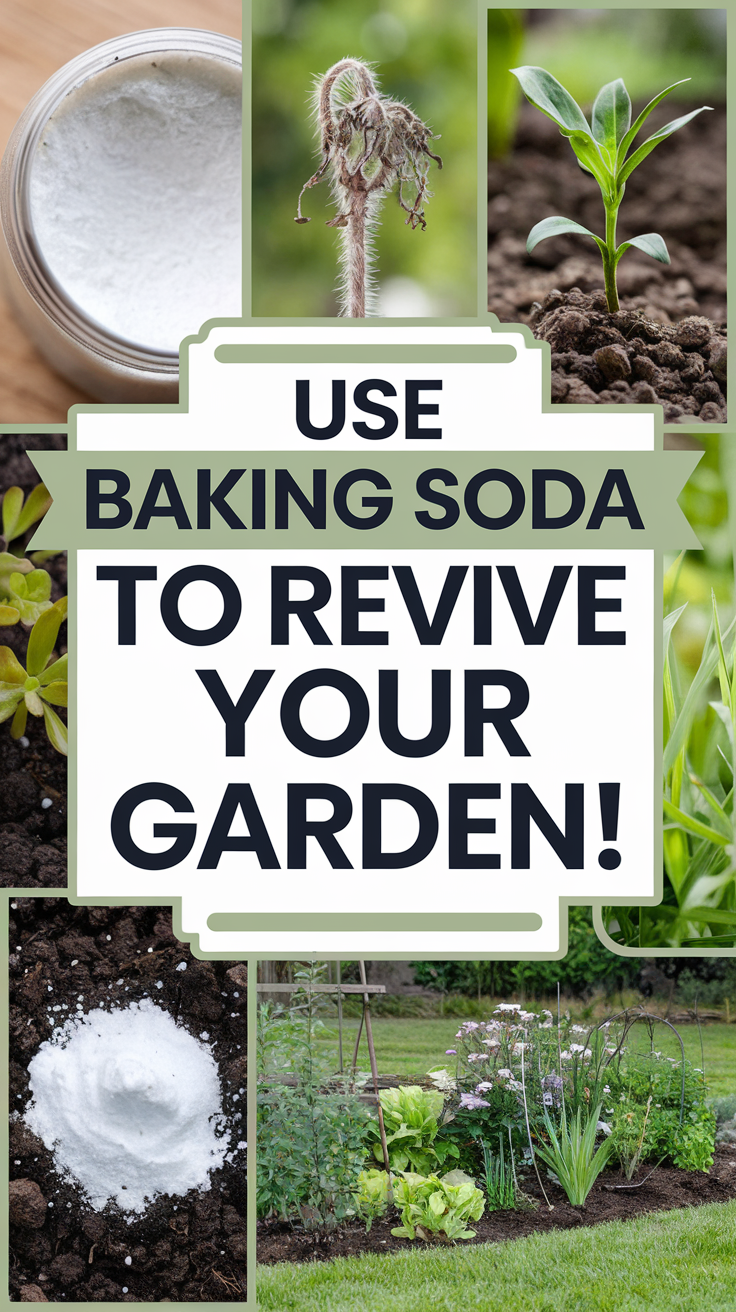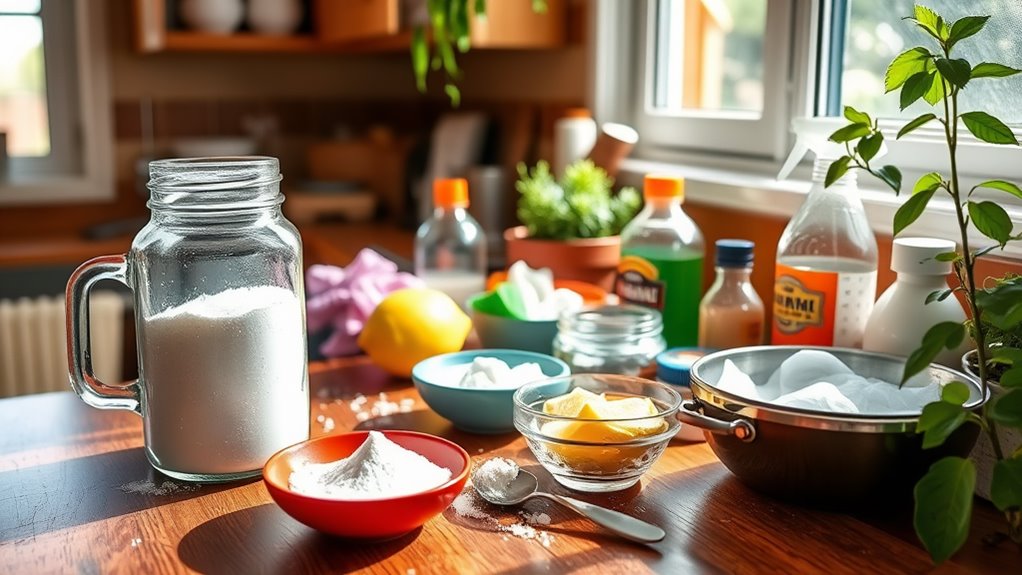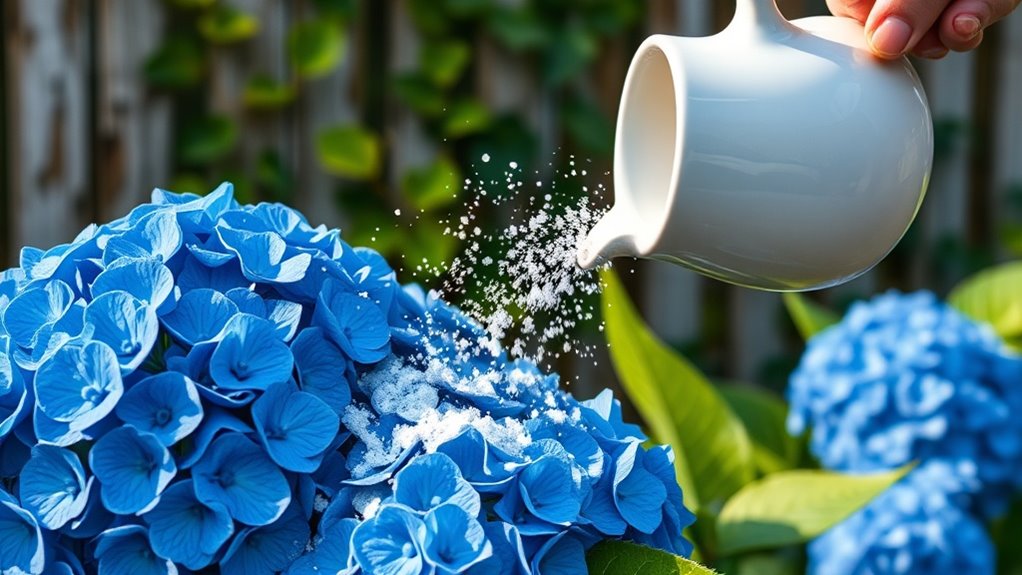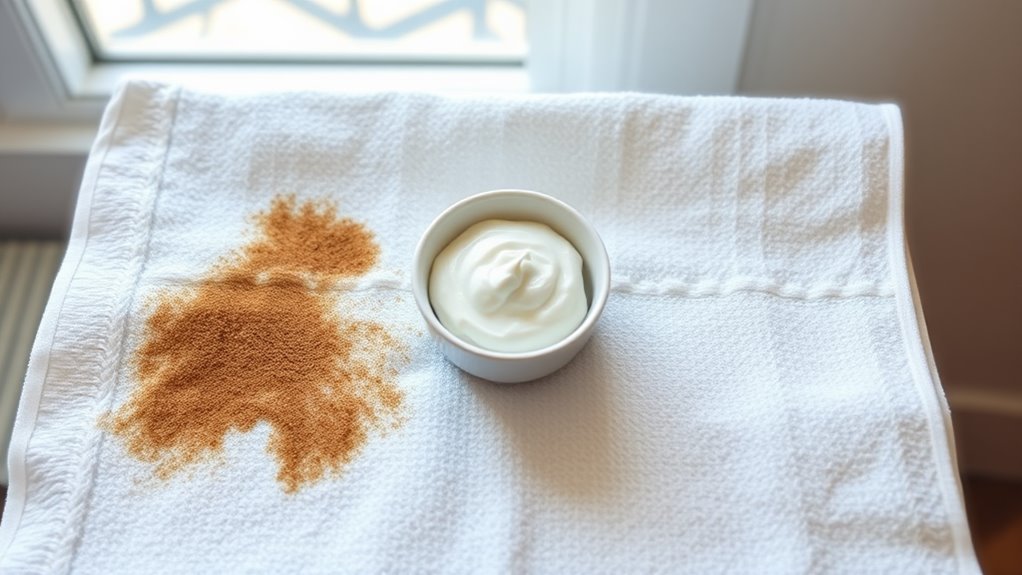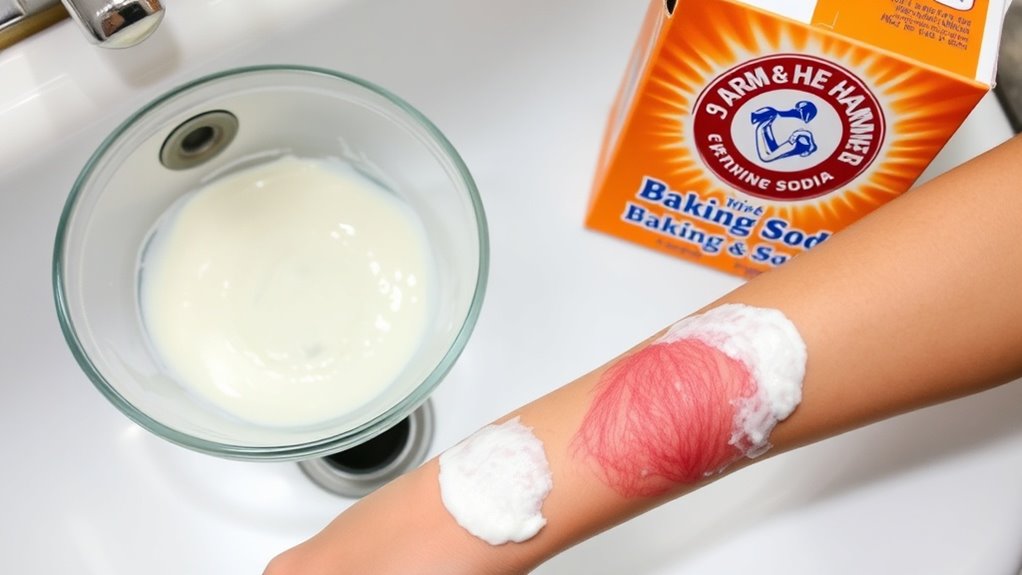Use Baking Soda to Revive Your Garden!
Baking soda can transform your struggling garden into a thriving oasis. You’ll find this kitchen staple balances soil pH, deters pests naturally, and fights fungal diseases like powdery mildew. Mix one tablespoon with a gallon of water and liquid soap for an effective spray, or dust it lightly around plant bases to adjust soil acidity. Apply in early morning when dew is present for best results. Discover how this affordable solution tackles your toughest garden challenges.
Key Takeaways
-
Mix 1 tablespoon baking soda per gallon of water to create an effective spray against fungal diseases and powdery mildew.
-
Sprinkle baking soda around plant bases to balance soil pH, promoting better nutrient absorption and healthier growth.
-
Combat garden pests naturally by dusting plants with baking soda, creating a barrier against aphids and spider mites.
-
Enhance hydrangea blooms by applying baking soda around the base, encouraging vibrant blue coloration.
-
Create a monthly soil treatment using 1 pound baking soda per 1,000 square feet to maintain optimal garden health.
What Makes Baking Soda a Garden Powerhouse
Nature’s versatile helper, baking soda brings multiple benefits to your garden through its unique chemical properties. As an alkaline substance, it helps balance soil pH levels and combats harmful fungal growth that can damage your precious plants.
You’ll love how it transforms the color of your hydrangeas – just sprinkle baking soda around the base to create stunning blue blooms.
This kitchen staple’s power lies in its sodium bicarbonate composition, which naturally deters pests while remaining safe for beneficial insects.
It works as a gentle but effective cleanser for garden tools and containers, preventing the spread of diseases between plants. When mixed with water, it creates an eco-friendly spray that helps control powdery mildew and other common plant ailments, making it an essential part of every gardener’s toolkit.
Understanding Soil Ph and Plant Health
One of gardening’s key success factors lies in maintaining proper soil pH, which directly impacts how well your plants absorb nutrients.
Most plants thrive in slightly acidic soil with a pH between 6.0 and 7.0, though some prefer more acidic or alkaline conditions.
You’ll want to regularly test your soil’s pH using a simple testing kit from your local garden center.
If you’re finding your soil’s too acidic, that’s where baking soda comes in handy. As an alkaline substance, it’ll help neutralize acidic soil when applied in measured amounts.
Just remember that a little goes a long way – start with a light dusting and retest after a week.
Your plants will show their appreciation through healthier growth and more vibrant blooms.
Essential Tools and Materials Needed
Before starting your baking soda soil treatment, you’ll need to gather several essential items.
Like other garden enthusiasts, you’ll want to have a pH testing kit, a clean bucket, and measuring tools ready. You’ll also need pure baking soda (sodium bicarbonate), a watering can, and protective gloves to keep your hands safe.
For accurate application, grab a small garden trowel, a spray bottle for foliar treatments, and a notebook to track your progress.
Don’t forget to include basic garden tools like a rake and hand fork to help incorporate the baking soda into your soil. If you’re treating a large area, you might want to invest in a soil spreader to guarantee even distribution of your baking soda solution.
Testing Your Garden’s Current Ph Level
With your tools ready, the first step to using baking soda in your garden is measuring your soil’s pH level.
You’ll want to collect soil samples from different areas of your garden, as pH can vary across your growing space. Mix each sample with distilled water in a clean container, following your pH test kit’s instructions.
Once you’ve got your readings, you’ll know exactly where you stand. Most plants thrive in soil with a pH between 6.0 and 7.0, though some prefer more acidic or alkaline conditions.
If you’re finding readings below 6.0, that’s where baking soda can help – it’s a natural way to raise pH levels. Just remember to test multiple spots and keep a record of your readings, so you can track changes over time.
Calculating the Right Amount of Baking Soda
Determining the correct amount of baking soda starts with your soil test results and the size of your garden area.
For every point you need to raise your pH, use 1 pound of baking soda per 1,000 square feet of soil. If you’re working with a smaller garden, you’ll need to scale down – about 1 tablespoon per square foot is a good rule of thumb.
You’ll want to measure your garden space carefully and do the math before applying.
For example, if your garden is 100 square feet and you need to raise the pH by 0.5, you’ll need 1.6 ounces of baking soda.
It’s better to start with less and retest than to over-apply. Many gardeners find that splitting the application over two sessions provides better results.
Best Times to Apply Baking Soda
Timing your baking soda application correctly can make a significant difference in its effectiveness.
You’ll want to apply it early in the morning when dew is still present, as this helps the powder stick to plant surfaces. Avoid application during the heat of midday or when rain is forecasted within 24 hours.
For fungal prevention, start your treatments in early spring before problems emerge. If you’re dealing with existing fungal issues, apply every 7-14 days during the growing season.
When using baking soda to adjust soil pH, fall and early spring are ideal times, giving the soil time to balance before heavy planting begins.
Remember to test your soil’s pH levels before each application, and don’t apply baking soda to wet foliage in the evening, as this can promote fungal growth.
Application Methods for Different Plants
Different plants require specific baking soda application methods to achieve the best results.
For leafy vegetables, mix one teaspoon of baking soda with a quart of water and spray directly on leaves to prevent fungal growth.
When treating tomato plants, dust the powder lightly around the base to reduce soil acidity and sweeten your harvest.
For roses and other flowering plants, you’ll want to create a paste using three tablespoons of baking soda and a cup of water. Apply this mixture to stems and leaves affected by black spot or powdery mildew.
Sprinkle dry baking soda around the base of your hydrangeas to enhance their blue coloring.
With succulents, use a light dusting on the soil surface to prevent root rot and manage moisture levels effectively.
Hydrangea Color Enhancement Techniques
While many gardeners focus on fertilizers, baking soda plays an essential role in shifting hydrangea colors from pink to blue.
You’ll want to mix one tablespoon of baking soda per gallon of water and apply it to the soil around your hydrangeas every two weeks during the growing season.
For the best results, you’re going to need to start this treatment early in spring before your hydrangeas bloom. The baking soda helps increase soil pH, which directly affects the flower color.
You’ll notice the changes gradually, as your hydrangeas begin absorbing more aluminum from the soil. To maintain the blue color you’re after, continue the applications throughout the season.
If you’re dealing with stubborn soil, you might need to double the concentration, but don’t exceed this amount to avoid root damage.
Treating Common Plant Diseases
Beyond changing flower colors, baking soda serves as a powerful natural fungicide for your garden.
You’ll find it especially effective against powdery mildew, black spot disease, and other common fungal problems that plague your plants. Mix one tablespoon of baking soda with a half-gallon of water and add a few drops of liquid soap to help it stick to leaves.
When you spot early signs of fungal infection, spray this solution on your affected plants weekly. It’s perfect for treating roses, cucumbers, zucchini, and other susceptible varieties in your garden.
Remember to spray both the top and bottom of leaves for best results. This eco-friendly treatment won’t harm beneficial insects or contaminate your soil, making it a favorite among organic gardeners who want to protect their plants naturally.
Natural Pest Control Solutions
Since baking soda naturally deters many common garden pests, you’ll find it effective against slugs, snails, and various crawling insects.
Simply sprinkle a light barrier of baking soda around your plants’ bases to create a protective boundary these pests won’t cross.
For more stubborn invaders, mix one tablespoon of baking soda with water in a spray bottle.
Add a drop of liquid soap to help the solution stick to leaves. You can safely spray this mixture on your vegetables and ornamental plants to ward off cabbage worms, aphids, and spider mites.
Remember to reapply your baking soda barrier or spray after rain.
This natural deterrent keeps your garden pest-free without harsh chemicals, making you part of the growing community of eco-conscious gardeners who protect their plants sustainably.
Protecting Your Plants From Fungal Growth
Because fungal diseases can quickly devastate your garden, baking soda’s natural antifungal properties make it an excellent preventative treatment.
You’ll find this common household ingredient particularly effective against powdery mildew, black spot, and other fungal issues that plague many gardeners.
Mix one tablespoon of baking soda with a gallon of water and add a few drops of liquid soap to help the solution stick to your plants.
Spray this mixture on your plants’ leaves every two weeks during humid weather when fungi thrive. Be sure to coat both the top and bottom of the leaves for best results.
Remember not to apply the solution during hot, sunny days as it may burn the foliage. Early morning or evening applications work best for your garden’s health.
Mixing Baking Soda With Other Garden Amendments
While baking soda works well on its own, combining it with other garden amendments can boost your soil’s health and productivity.
You’ll get excellent results when you mix it with Epsom salt and compost tea, creating a powerful soil conditioner that helps balance pH levels and adds essential minerals.
Try combining one tablespoon of baking soda with a cup of Epsom salt in a gallon of water. For an extra nutrient kick, add some liquid seaweed or fish emulsion.
You can also mix baking soda with neem oil to create an effective organic pesticide that won’t harm beneficial insects.
Remember to start with small amounts when mixing amendments – you can always add more if needed.
Your garden will thrive when you use these natural combinations thoughtfully and consistently.
Signs of Over-Application
As beneficial as baking soda mixtures can be for your garden, too much of a good thing can harm your plants.
You’ll notice signs of over-application when your plants develop yellowing leaves, particularly around the edges, or when their growth becomes stunted.
Watch for whitish crusts forming on your soil’s surface – this indicates excessive sodium buildup.
Your plants might show leaf burn, wilting, or dropping leaves even when properly watered.
If you’ve been using baking soda treatments and spot these warning signs, it’s time to act.
You can correct over-application by thoroughly flushing your soil with pure water and temporarily stopping all baking soda applications.
Consider testing your soil’s pH, as too much baking soda can make it too alkaline for most garden plants.
Seasonal Application Guidelines
Since garden needs vary throughout the year, you’ll want to adjust your baking soda applications accordingly.
In spring, start with a light application of 1 teaspoon per plant to protect emerging seedlings from fungal diseases.
During summer months, increase to 2 teaspoons monthly when treating established plants, especially during humid periods when mildew is common.
Fall applications should focus on soil preparation, using ¼ cup per square meter to adjust pH levels before winter.
Skip winter applications for dormant plants, but if you’re growing in greenhouses, maintain a monthly schedule at half the summer rate.
Remember to test your soil’s pH every season and adjust these amounts based on your specific plant types and local climate conditions.
Always apply during dry weather to prevent the baking soda from washing away too quickly.
Storage and Shelf Life Tips
Although baking soda is shelf-stable, you’ll need proper storage to maintain its effectiveness for garden use.
Keep your garden baking soda in an airtight container away from moisture, heat, and direct sunlight. You’ll find it’s best to store it in a cool, dry place like your garden shed or garage.
Like other fellow gardeners, you’ll want to label your container with the purchase date.
While baking soda doesn’t technically expire, it can lose potency after about two years. If you’re unsure about its freshness, try the simple vinegar test – add a teaspoon to vinegar, and if it fizzes vigorously, it’s still good to use.
Remember to seal the container tightly after each use to prevent clumping and maintain its garden-friendly properties.
Environmental Impact and Benefits
While many chemical garden treatments can harm the environment, baking soda stands out as an eco-friendly alternative.
You’ll love knowing that it’s biodegradable and won’t contaminate soil or groundwater. Unlike harsh pesticides and fungicides, baking soda breaks down naturally without leaving harmful residues.
When you choose baking soda for your garden, you’re joining a community of environmentally conscious gardeners. It’s safe for beneficial insects like bees and butterflies, and it won’t harm your pets if they venture into the garden.
Since it’s produced from natural minerals, its manufacturing process has a lower carbon footprint compared to synthetic chemicals. Plus, using baking soda reduces plastic waste since you can buy it in recyclable cardboard boxes instead of disposable spray bottles.
Common Mistakes to Avoid
Despite baking soda’s many garden benefits, you’ll need to watch out for several common application mistakes. The most critical error is using too much – a little goes a long way, and overdoing it can harm your plants or alter soil pH too drastically.
Don’t apply baking soda to wet foliage, as this can lead to leaf burn.
Another mistake gardeners often make is treating problems without proper identification. Not every plant issue calls for baking soda treatment.
You’ll also want to avoid mixing baking soda with other substances unless you’re following tested recipes, as some combinations can damage your plants.
Finally, don’t forget to test your soil’s pH before and after applications – many fellow gardeners skip this step and end up with unbalanced soil conditions.
Tracking and Maintaining Results
To build on proper baking soda application methods, keeping detailed records of your garden treatments will help you maximize their effectiveness.
Create a garden journal to track when you apply baking soda, which plants you treat, and the concentrations you use. Be sure to note weather conditions and any visible results.
Take weekly photos of your treated plants to monitor their progress. You’ll want to document any changes in leaf color, growth patterns, or pest presence.
If you’re part of a gardening community, share your findings with fellow enthusiasts. Compare notes on which applications worked best for specific plants and conditions.
When you notice positive results, maintain the same treatment schedule and mixture ratios. If something isn’t working, your records will help you adjust your approach effectively.
Frequently Asked Questions
Can Baking Soda Help Seeds Germinate Faster?
You won’t speed up germination with baking soda. Instead, you’ll want to focus on proper moisture, warmth, and soil conditions to help your seeds sprout successfully and naturally.
Will Baking Soda Treatment Affect the Taste of Edible Plants?
You won’t notice any taste changes in your edible plants when using proper baking soda amounts. Your veggies and herbs will maintain their natural flavors while benefiting from balanced soil pH.
How Long Should I Wait Before Watering After Applying Baking Soda?
You’ll want to wait at least 24 hours before watering your plants after applying baking soda. This gives the treatment time to work and prevents it from washing away too quickly.
Does Baking Soda Work Differently for Indoor Versus Outdoor Plants?
You’ll notice similar effects with baking soda on both indoor and outdoor plants, but you’ll need to be more careful with indoor applications since there’s less soil and drainage available.
Can Baking Soda Treatment Make My Vegetables Grow Bigger?
You won’t get bigger vegetables from baking soda alone. While it can help balance soil pH and prevent fungal issues, proper nutrients, water, and sunlight are what’ll increase your harvest size.
